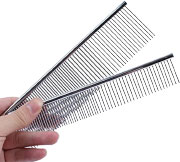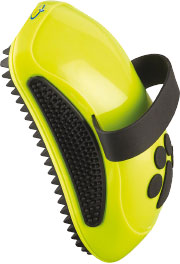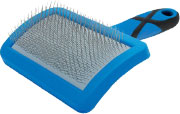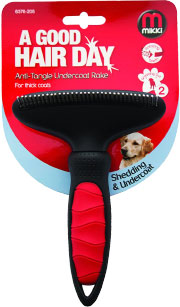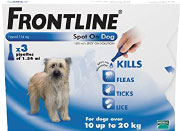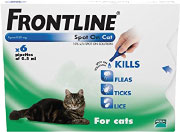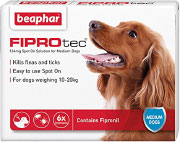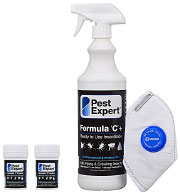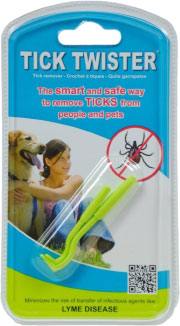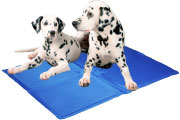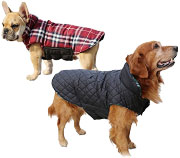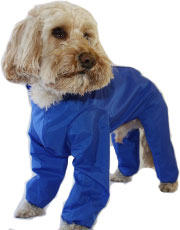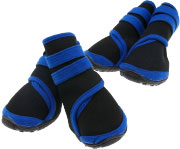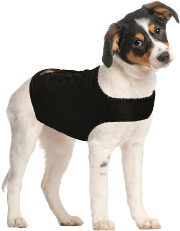07752 241 596 | wendy@furbabiesgrooming.co.uk


Caring for Your Pet
Help and advise on how to look after your furbabies.
Dog Grooming Guide
Regular grooming is extremely important for the well-being of your canine companion.
This guide will outline the benefits of having your dog professionally groomed as well as providing information on your dog's coat type, the recommended grooming brushes to use and how often your dog should be groomed.
Brushing helps aerate the dog's coat ensuring healthy growth as well as promoting better blood circulation. As most dogs live indoors they moult much faster than their wild counterparts and this causes loose hair to quickly become matted. If the loose hair is not brushed out regularly the matted wads can cause skin complaints and soreness. Washing helps remove the grease which, if allowed to build-up, can block the skin's pores and cause sebaceous cysts.
There are many benefits to using a professional grooming service such as FurBabies Grooming. The tools and equipment we use are generally of a higher specification than those used in the home. We have an extensive knowledge of the different dog breeds and coat types. This ensures we provide a balanced, professional clip that will enhance your dog's coat to make them look their best. We only use high quality shampoos and conditioners and select the optimum shampoo for your dog's coat type. During a groom we inspect your dog's skin and may spot problems such as fleas, ticks or lumps.
At FurBabies Grooming we always make sure your dog's visit not only provides an opportunity for social interaction but is a fun, stress-free and enjoyable experience.
Food that's bad for Dogs
A list of 'Human Foods' that you should avoid feeding to your dogs.
While it can be difficult to resist those puppy-dog eyes begging for a treat, giving your dog certain foods can cause them serious health problems. Many foods that are perfectly safe for us to eat can be extremely toxic to dogs. It's far better to feed them pet foods and treats than to risk their health by giving them foods that are unsafe or unfit for canine consumption. Below is a list of foods you should avoid feeding to your furbaby. If you suspect your dog may have eaten any of these foods you should contact your vet for advice.
Alcohol
Alcoholic beverages, such as beer, wine and spirits, as well as foods containing alcohol, can cause the same damage to your dog's liver and brain as they can in humans. The smaller the dog, the more damaging the effects can be. Alcohol may cause vomiting, diarrhoea, lack of coordination, breathing problems, tremors, coma and death.
Avocado
Avocado plants contain a fungicide called Persin in their fruits, leaves, bark and seeds which is toxic to animals. As well as being poisonous, the avocado's stone is a choking hazard and could block the digestive system, which would require surgery to remove. If you grow avocados you should ensure your dog can't get near them.
Bones, Raw Meat and Fat Trimmings
Bones, particularly cooked ones, can choke your dog, can chip teeth and also splinter and block or puncture your dog's digestive system. Raw meat can contain bacteria such as Salmonella and E. Coli which is extremely harmful to dogs. Fat trimmings, cooked and uncooked, can cause Pancreatitis in dogs.
Caffeine
Coffee, tea, cola and energy drinks all contain caffeine which is a stimulant. The caffeine stimulates the dog's heart and nervous system leading to restlessness, fast breathing, muscle twitches, heart palpitations and even death. The symptoms of caffeine poisoning are similar to chocolate toxicity (see below).
Chocolate
Most people know that chocolate is bad for their dog. Chocolate contains Theobromine, which is harmless to humans but extremely toxic to dogs. All forms of chocolate are harmful, but dark chocolate and ba
king chocolate are particularly dangerous. Chocolate may cause vomiting, diarrhoea, dehydration, tremors, seizures and death.
Corn on the Cob
Corn on the cob, unlike other vegetables, does not digest properly in the dog's stomach. Chunks of the cob can block the digestive system which would require surgery to remove. A blockage may cause vomiting, diarrhoea, loss of appetite, abdominal discomfort and absence of faeces.
Dairy Products
Most dogs have problems digesting dairy products including milk, butter, cheese and ice cream. This is because dogs don't produce enough of the Lactase enzyme which is required to properly digest the lactose sugars in milk. Dairy may cause vomiting, diarrhoea and digestive upset.
Fish
Raw fish, particularly salmon, trout and sturgeon, can be infected with parasites and bacteria that are extremely harmful to dogs if not treated quickly. Symptoms may include vomiting, fever and enlarged lymph nodes. Feeding fully cooked fish is fine as it kills the parasites and bacteria (ensure all bones are removed).
Fruit
Pips and stones from fruits including apples, pears, plums, peaches and cherries contain a chemical called Amygdalin, that can release Hydrogen Cyanide when digested, which can cause digestive upset. The larger fruit stones can cause choking or blockages, particularly in smaller dogs and puppies.
Grapes
Even a small number of grapes can be fatal to dogs as the effects are cumulative. Grapes contain an unknown toxin that causes liver damage and kidney failure. Feeding just a few grapes regularly will allow the toxin to build up in the dog's system, eventually leading to death. Symptoms include vomiting, sluggishness and depression.
Nuts
Macadamia nuts and Walnuts, and products that contain them, are particularly toxic to dogs and can cause problems with standing and moving. Even consuming a small quantity of Macadamia nuts can be harmful. Symptoms include vomiting, weakness in the legs, tremors, panting and high temperature.
Onions, Garlic and Chives
All members of the Allium family, including onions, garlic, leeks and chives, are extremely toxic to dogs. All forms including dried, powdered, cooked and uncooked are dangerous and the effects are cumulative. The toxin destroys the dogs red blood cells leading to anaemia. Symptoms include vomiting, weakness and breathing problems.
Raisins, Currants and Sultanas
All forms of dried grapes, including raisins, currents and sultanas, contain an unknown toxin that causes liver damage and kidney failure. The effects are cumulative so feeding a few raisins regularly will cause the toxin to build up to dangerous levels in the dog's system. Symptoms include vomiting, sluggishness and depression.
Xylitol
The artificial sweetener Xylitol is found in a number of foods, including sweets, chewing gum, cakes, diet foods, peanut butter and toothpaste. It causes a rapid release of the hormone Insulin in dogs and can lead to Hypoglycaemia (low blood sugar) and liver failure. Symptoms include vomiting, weakness, coordination problems and seizures.
Yeast Dough
The yeast in bread dough causes it to rise before being baked. If your dog eats any dough it will continue to expand potentially blocking, or even rupturing, the stomach or intestines. The fermenting yeast also gives off gas, which can cause the dog a great deal of discomfort, as well as Ethanol (Alcohol) which is toxic (see above).
Dealing with Fleas & Ticks (Ectoparasites)
Fleas: Dog Flea (Ctenocephalides Canis) and Cat Flea (Ctenocephalides Felis).
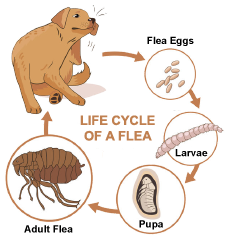
Fig.1 - Life Cycle of a Flea.
Did you know 95% of fleas live in the home and the other 5% live on your pets? Within a few days of their first meal the adult fleas lay up to 50 eggs per day which, as they are not sticky, will drop onto carpets and bedding. The eggs soon hatch into larvae which live deep in the carpets because they dislike light. The adult fleas hatch from their pupa cocoons when a host is nearby and begin the lifecycle again which can be as short as three weeks. With our homes kept warm by central heating fleas have now become a year round problem.
Fleas can cause allergic reactions as well as carrying viruses, bacteria and parasites. In extreme cases pets can die from a serious infestation of fleas if not treated quickly. It is much easier, and cost effective, to prevent an infestation of fleas than trying to eradicate an existing one. Pets that stay in the home are just as susceptible to becoming infected with fleas as those that go outdoors because fleas can be brought indoors on your clothing or enter the home through openings.
Flea Prevention: How do I know if my pet has fleas?
Signs to look out for are: frequent scratching, small bites on your skin and small black or brown insects or dark specs in your pet's fur. Combing your pet's coat with a fine toothed comb over a piece of paper will reveal fleas or droppings if your pet has become a host. Monthly flea treatment will prevent your pet from catching fleas in the first place. You should always seek advice from your vet before selecting a suitable flea treatment. Ensure the treatment you choose is suitable for your pet as some flea treatments can contain chemicals that are safe for some dogs but poisonous to other breeds and cats.
Dealing with an Infestation: How do I get rid of fleas?
When dealing with an infestation of fleas it is imperative that you treat both your pets and the home. Fleas can survive for many months without a host. You will need to thoroughly clean and vacuum all carpets, bedding and furniture over a number of weeks to ensure fleas at all stages of their lifecycle are destroyed. Vacuum cleaners should be emptied after each cleaning to prevent fleas from hatching. The application of flea insecticide spray to infected areas as well as the use of flea fumigators (flea bombs) should be used as an aid to eradicating a flea infestation.
Ticks: The 'Hard' Tick (Ixodidae) and the 'Soft' Tick (Argasidae).
Another common problem for dog owners are ticks. Dogs can pick up ticks from woodland areas or from long grass where they attach themselves to the dog. Ticks feed on the dog's blood and grow considerably in size. Although ticks will eventually fall off, quick removal is essential as they are a carrier of diseases in domestic animals, passing disease from one animal to another.
Tick Prevention: How do I know if my pet has ticks?
Signs to look out for are black or brown insects that look like warts or tiny spiders in your pet's fur or partly buried in their skin. Monthly tick treatment will kill ticks as soon as they are picked up by your pet. You should always seek advice from your vet before selecting a suitable tick treatment. Ensure the treatment you choose is suitable for your pet as some tick treatments can contain chemicals that are safe for some dogs but poisonous to other breeds and cats.
Tick Removal Guide: How do I remove ticks from my pet?
Although ticks need to be removed as quickly as possible, it needs to be done carefully to prevent creating additional problems for you and your pet. As well as using tweezers, there are a number of other products on the market that are specifically designed to help you remove ticks safely. You should ask your vet for further details on which one would be best suited for you and your pet.
1. Once the tick has been removed, it should be placed in a safe container, so make sure you have one to hand. Throwing the tick in the bin or outside doesn't necessarily get rid of it permanently, so it's a good idea to keep hold of it for a while in case your pet becomes ill from the bite. If this happens, take the tick to the vet, who may be able to test for diseases.
2. You should never have direct contact with the tick or your pet's bitten area so make sure you use rubber gloves when removing the tick and treating the skin. Ticks carry bacteria that can enter your bloodstream through breaks in your skin or by touching your eyes, nostrils or mouth.
3. Just as it's not pleasant for you to remove the tick, it's not a nice procedure for your pet either. If possible, have someone else keep the pet still and calm until you're finished.
4. Using a pair of tweezers or a tick removal device, grasp the tick firmly as close to the animal's skin as possible. Pull straight upwards with even pressure, removing the whole tick from the skin, quickly placing the tick in your container. Do not twist or squeeze the tick, as this may leave parts embedded in your pet, or cause the tick to bring up infected fluids. If any part of the tick remains in your pet's skin, it's best to disinfect it and allow the body to eject it naturally. If the area appears red or inflamed, a warm compress might quicken this process, but do not attempt to remove it with tweezers.
5. Thoroughly disinfect the bite and surrounding areas of the skin, washing your hands with soap and water (even though you were wearing gloves). You also need to sterilise your tweezers.
6. Over the next few weeks, look out for any signs of infection. If the redness doesn't go away, or gets worse, please take your pet – and the tick – to your vet for testing.
Pet Vaccinations
The importance of vaccinating your pet.
Today there are a variety of vaccinations available from your vet that cover a host of diseases. Vaccines are designed to stimulate the immune system of your pet to ensure they can fight off any infections. Certain vaccines can prevent infections altogether where others only lessen the severity of the disease.
Ideally vaccinations should be carried out when your puppy is 8 weeks old and your kitten is 9 weeks old, where an initial course of 2 vaccinations are given, which are then followed up with an annual booster. However it is never too late to start a vaccination program and your vet will be able to advise on the best course of treatment.
Many organisations, including kennels and pet groomers, will not take pets unless they have a complete record of vaccination. It is worth noting that if your unvaccinated pet contracts a disease the treatments can be very expensive and that many diseases are fatal even if promptly treated.
Preventable dog diseases.
Canine Parvovirus
A highly contagious viral infection that damages the dog's immune system and causes painful and severe diarrhoea and vomiting leading to dehydration and lack of appetite, with over 25% of cases proving to be fatal. The less common form is the cardiac form, which attacks the heart muscles. Canine Parvovirus mostly affects puppies, although adult dogs can contract it.
Distemper ('Hard Pad' Disease)
A viral infection that has symptoms including high fever, reddened eyes, and a watery discharge from the nose and eyes. An infected dog will become lethargic and tired, and will usually become anorexic. Persistent coughing, vomiting and diarrhoea may also occur. In the later stages of the disease, the virus starts attacking the other systems of the dog's body, particularly the nervous system. The brain and spinal cord are affected and the dog may start having fits, seizures and paralysis. Distemper is usually fatal.
Leptospirosis (Weil's Disease)
A bacterial infection that can cause liver and kidney failure. It can be contracted if your dog swims in or drinks from water that has been exposed to rat's urine. Symptoms include (but not restricted to): fever, shivering, lack of appetite, increased thirst and urination, vomiting, diarrhoea, yellow skin and/or whites of eyes, coughing, breathing difficulties and runny nose.
Canine Hepatitus (Adenovirus)
A viral infection that attacks the liver, kidneys, eyes and blood vessel walls and can be fatal. Symptoms include: lethargy, anorexia, fever, vomiting, diarrhoea, enlarged liver and abdominal pain. Late stage infection may result in eye inflammation and corneal swelling as well as glaucoma and corneal ulceration.
Kennel Cough and Para-Influenza
Kennel cough, the common name given to infectious canine tracheobronchitis, is a highly contagious respiratory disease among dogs. It is actually several viruses and bacteria that join together to cause infection of the nose, throat and chest. This disease is found throughout the world and is known to infect a high percentage of dogs at least once during their lifetime. Infection can occur anywhere a dog meets another dog e.g. at the park or in the street, not just in kennels. It is also sometimes referred to as Bordetellosis. Young puppies often suffer the most severe complications that can result from this disease since they have immature immune systems. Also at increased risk are older dogs, who may have decreased immune capabilities, pregnant bitches, who also have lowered immunity, and dogs with pre-existing respiratory diseases. Symptoms include: A persistent/hacking cough, retching and watery nasal discharge. Although not mandatory it is advisable to vaccinate your dog, especially if you are planning to place them in kennels.
Preventable Cat Diseases.
Feline Leukaemia (FeLV)
Feline Leukaemia virus is a disease that attacks the cat's immune system and causes certain types of cancer and is responsible for the majority of deaths in household cats. Males are more likely to contract the infection than females, and it is usually seen between the ages of one to six years old. There are three types of FeLV infection: FeLV-A, FeLV-B, and FeLV-C and cats can be infected with one, two, or all three types. o FeLV-A: Occurs in all infected cats and severely weakens the immune system. o FeLV-B: Occurs in approx. 50% of infected cats and causes tumours and abnormal tissue growths. o FeLV-C: Occurs in approx. 1% of infected cats and causes severe anaemia. Symptoms include: anaemia, progressive weight loss, abscesses, enlarged lymph nodes, persistent diarrhoea and unsteadiness on their feet.
Cat Flu (H1N1 Influenza)
The H1N1 variant of the influenza virus, previously known somewhat inaccurately as 'swine flu', is contagious to cats as well as to people, dogs, pigs and ferrets. This disease can be fatal in kittens if left untreated. Symptoms include: coughing, sneezing, lack of appetite, runny eyes and nose and laboured breathing.
Feline Panleukopenia (Feline Distemper)
Feline Panleukopenia (FPV) is a highly contagious and life-threatening viral disease in cats. The virus affects the blood cells in the body, primarily the cells in the intestinal tract, bone marrow, and in the stem cells of the developing fetus which can lead to an anaemic condition, and open the body to infections from other illnesses. Symptoms include: vomiting, diarrhoea, dehydration, weight loss, fever, lack of interest in food and lack of coordination.
Pet Dental Care
Why is dental health important?
Dogs and cats can develop dental problems at any age, however by the age of about 2 years 80% of pets are showing signs of dental disorders. Dental diseases fall into 3 categories: Gingivitis is the inflammation of the gums and shows up as redness of your pets gums, Tartar is the accumulation of plaque on the teeth usually starting at the gum line and Pyorrhoea, the most serious, is pus in the mouth, usually between the teeth and gums. Not only do dental diseases cause decay and bad breath but the bacterial build up can enter the bloodstream and travel to other parts of the body causing more serious problems.
Why should I brush my pet's teeth?
Daily removal of plaque is the key to healthy teeth. Unless your pet's teeth are brushed at least twice a week, plaque, and eventually tartar, will build up at the gumline. Infection will then occur which can loosen the teeth and cause decay. It is easier to start brushing your pet's teeth when they are young so they become accustomed to it. You should use a soft bristled brush and pet toothpaste (do not use human toothpaste).
Emmi-Pet Ultrasonic Tooth Cleaning
FurBabies Grooming now offers the Emmi-Pet 100%-Ultrasound Dental Cleaning and Oral Hygiene treatment. This revolutionary treatment uses ultrasound to clean your pet's teeth thoroughly and efficiently without the need for brushing and effectively removes plaque and tartar build-up. This can help protect your pets from Periodontitis, Cavities and Bad Breath as well as saving the expense and trauma of having your pet sedated during mechanical removal of tartar at the vets.
The bristles of the Emmi-Pet ultrasonic attachment transmit ultrasound directly into the special formulated toothpaste where millions of micro bubbles burst gently removing tartar and bacteria from the teeth and gums without the need for brushing. In addition the ultrasound penetrates deep into the gums killing bacteria and improving blood circulation, effectively cleaning without any side effects. For more information regarding the Emmi-Pet Ultrasonic Tooth Cleaning treatments we offer please contact us.

